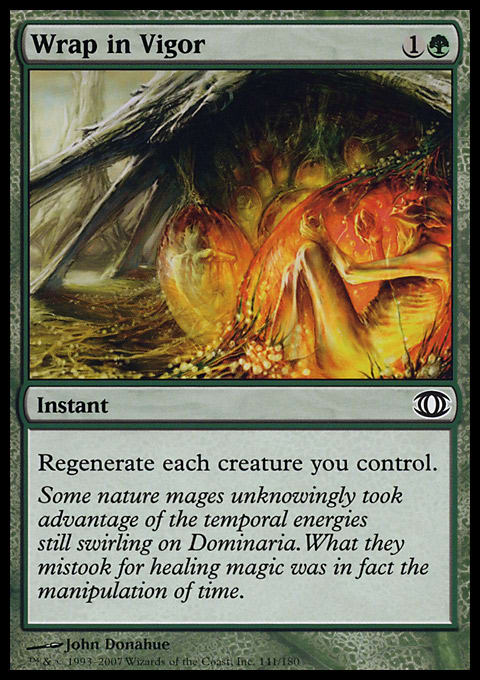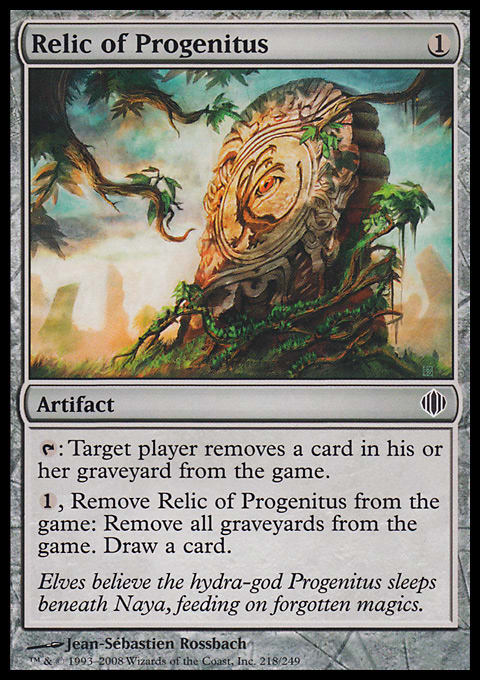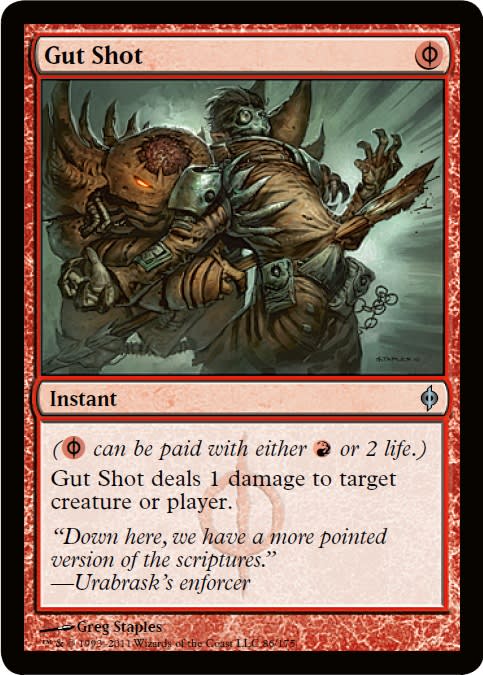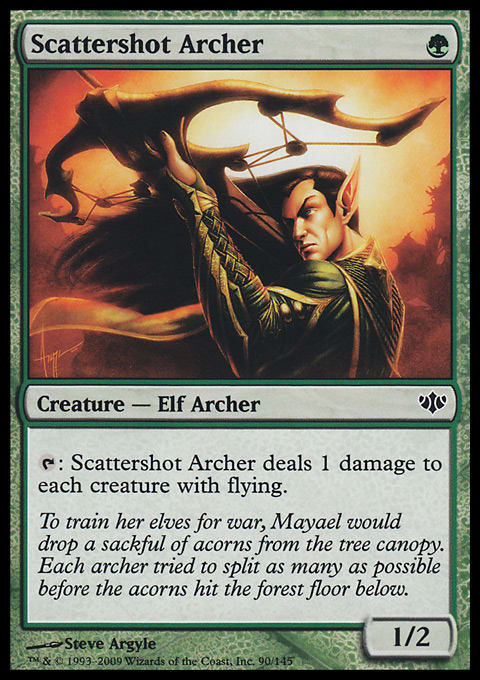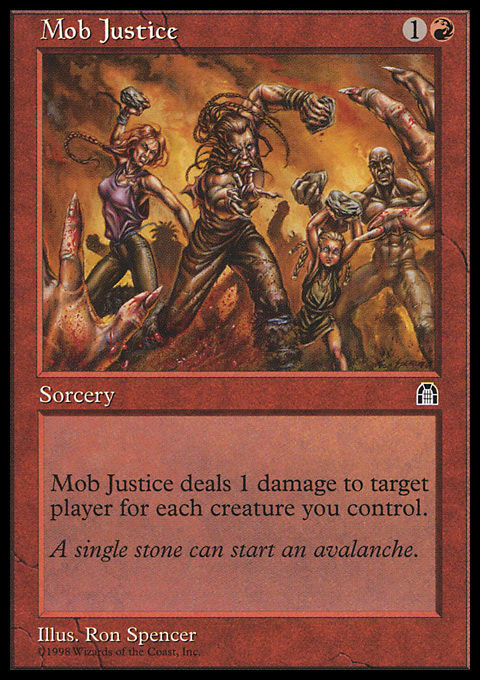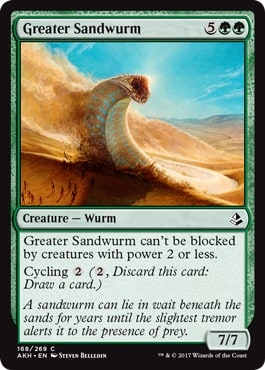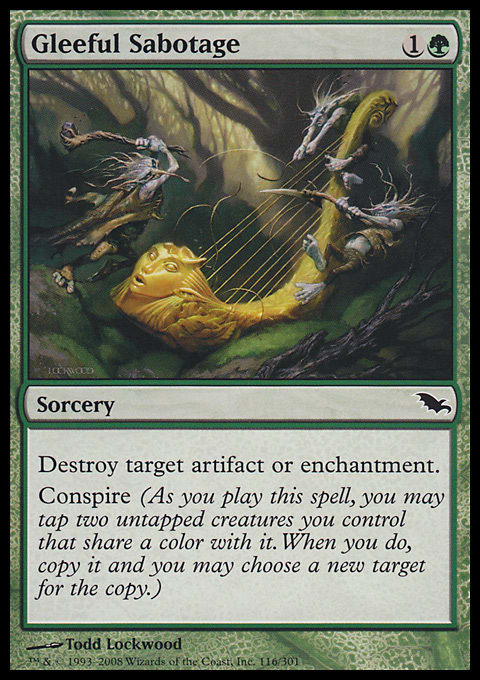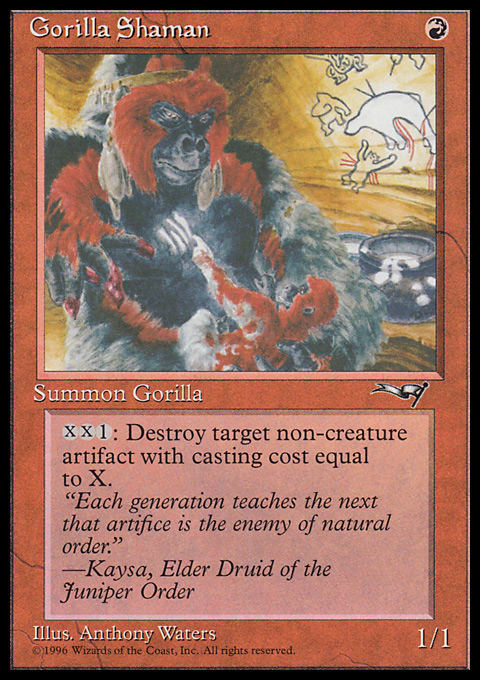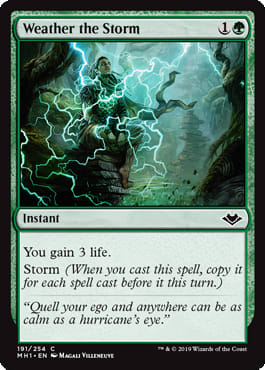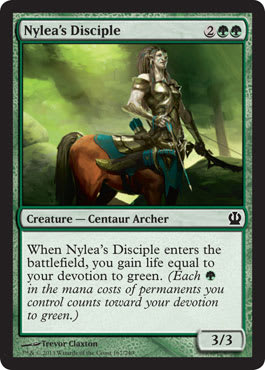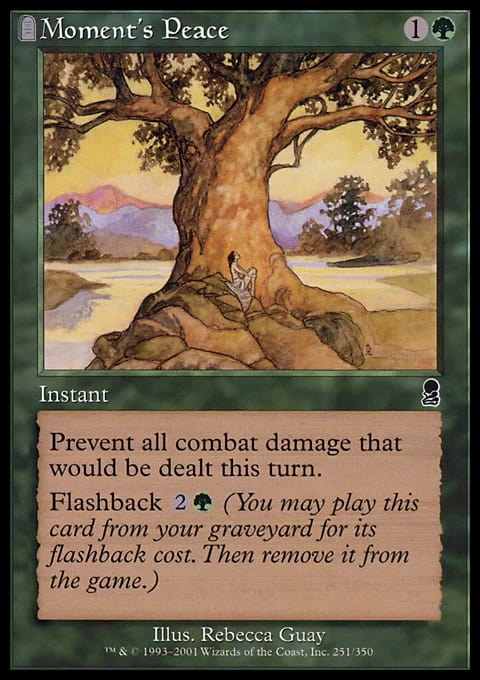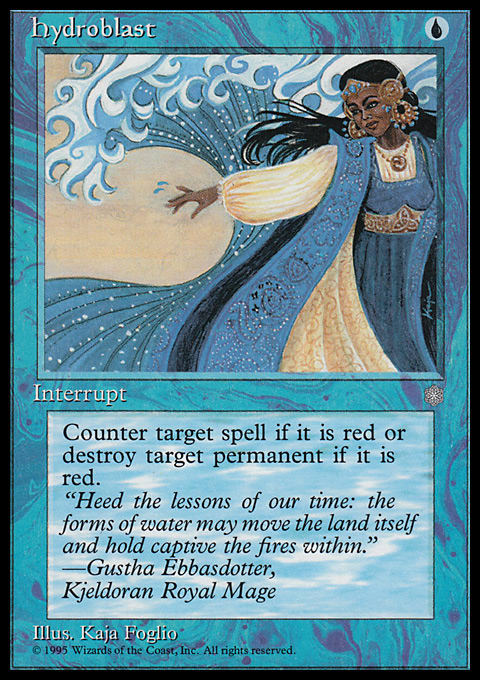Be sure to check out previous articles! Week one - introduction and main deck coverage - and week two - lesser used cards in main decks!
Welcome back to the third week of the Ultimate Pauper Elves Primer! Over the last two weeks, I've focused on providing you with a background and introduction to the deck as well as explained the roles of each individual card. These included both standard inclusions for the deck as well as some of the more oddball options that are less likely to show up but do from time to time. Make sure you check out both of those if you haven't already.
This week I'm going to be covering the kinds of cards you can expect to see in various sideboards for Pauper Elves. Unlike the last two weeks where I covered each card individually, this time I'll be hitting broader strokes. This is because many cards fill the same niche role but do so in different ways from one another. By doing this, we can look at why one card may be better over another for their respective roles.
I will not be covering more in-depth looks at the individual matchups here, nor will I be providing an actual sideboard guide. I will be doing those over the next two weeks. Instead, I'll focus on the cards and give a brief overview of how they might line up against certain matchups without going too in-depth. I'll also talk about how some areas work better with Distant Melody builds vs. Mono-Green builds.
It's important to note as well that I may not hit every single possible option as there's such a wide breadth of cards that fill similar roles. For example, there's a tremendous number of cards that we can use to gain life, destroy artifacts and enchantments, or to prevent damage. You could run something like Nourish, Naturalize, or Fog in each category respectively, but they're probably not ideal for the deck. Despite that, they can make great budget options to work with what you have access to the best.
With that, let's dive right on in and check out what sideboard options we have access to in Pauper Elves!
Board Wipe Hate
When playing Elves, there's one thing we tend to fear more than anything and that's board wipes. There's a number that can mow us down, such as Electrickery, Blazing Volley, Martyr of Ashes, Swirling Sandstorm, Shrivel, or Nausea, and Evincar's Justice. Many of these can be played super early and some - like Krark-Clan Shaman - are virtually impossible to deal with. As such, we need to take the proactive approach and bring these in against decks that are able to utilize Red or Black mana and bring in cards to deal with these board wipes.
The best option we have at our disposal is easily Spidersilk Armor. This card is the most permanent option that we have to deal with the smaller and more common board wipes. The power behind this one is that not only does it give additional toughness, but it also grants each of your creatures reach. This is crucial in battling back popular decks like Boros Monarch, Boros Bully, Izzet Faeries, and Mono-Blue Delver which all rely on fliers. In addition, since the effect stays on the battlefield, it stacks, meaning you can deal with cards like Evincar's Justice as well as the smaller ones.
The Future Sight card Lumithread Field also does the same thing but has a couple downsides compared to Spidersilk. The biggest is that it's off-color (White) and that, unlike Spidersilk Armor, it only gives creatures extra toughness and not the additional reach ability. As such, it's by and large going to be worse for the deck. Still, it's an excellent budget option, as you can get a playset for under a dollar while Spidersilk is roughly $2.50 a pop.
We also have one-time options in the form of Magnify and Wrap In Vigor. Both of these cards are cheaper in mana cost than Spidersilk, but don't stay in effect longer than one turn. Magnify is great as not only a way to fight back against Electrickeries, but also acts as a win condition, pushing through lots of damage if your opponent can't fog you out. Wrap In Vigor is for the bigger cards like Martyr of Ashes and Swirling Sandstorm. It doesn't matter how much damage they're going to deal, since we're regenerating our whole squad anyways. Because they're only one-time uses, I'd limit how much these are used over Spidersilk Armor, but I believe they're important in the proper meta.
I'd like to point out that this important area is why I'm not a huge fan of the Mono-Green build that only relies on only Lead the Stampede and Winding Way. When it comes to sideboard options, you're much more limited and have a tougher time trying to find ways to battle back board wipes. Thankfully, both cards allow us to easily bounce back from board wipes, but not being able to find any options hurts tremendously. All of these options are still worth running in your Mono-Green lists, but know that it will affect your ability to find what you need, which can be highly detrimental.
Graveyard Hate
One card that deals with both a very specific board wipe in the form of Swirling Sandstorm as well as simply chipping away at your opponents' graveyard is Relic of Progenitus. This card is important at fighting against decks like Tron and Tortured Existence specifically, and is something you won't be able to do with, say, Tormod's Crypt. The earlier you get it to stick, the better, as you can hit card after card. If things reach dangerous levels with something like Ghostly Flicker loops or a critical creature returning to hand in some way, you can simply pop the Relic and get rid of the problem for good.
As mentioned before, it also specifically deals with Swirling Sandstorm. The reason for this is that unless the player casting Swirling Sandstorm has Threshold - or seven cards in their graveyard - the card might was well be 4 mana for a blank text box. This means you can either keep your opponent from reaching Threshold or else pop it when the time is right to keep your creatures alive. I would only run this over Wrap in Vigor if you expect more Swirling Sandstorm - and thus Izzet Faeries - than you do Martyr of Ashes. It fits very specific roles but thankfully, Relic ends up being a truly versatile option for our arsenal.
The only other real option I'd consider for this role is Faerie Macabre. Unlike Relic, Faerie Macabre hits very specific cards from opponents' graveyards. This is crucial at taking out cards like Ghostly Flicker and Ephemerate at the right time to cut your opponent off from their loops. You can even make it a counterspell by removing targets of cards such as Pulse of Murasa. The main issue the card has is that being such a small, on-time use, it can be hard to shut down Swirling Sandstorms and the like. This is our best option for Lead the Stampede and Winding Way, however, so it's worth having as an option.
Creature Removal
One area that Elves somewhat lacks in is creature removal. This makes sense for a few reasons. The main one is that we're in Green, and that doesn't rely too heavily on creature removal. The other is that in many cases, we're trying to overrun and race opposing creature boards. That's not to say that we can't still utilize creature hate, but it's simply not going to be as good most of the time in Elves.
Our primary general hate is going to easily be Viridian Longbow. As mentioned in the first week, this card is tremendously versatile. While it's often used to win the game (more on that in the next section), it can also be used to effectively take down creatures. The Longbow allows us the ability to pick off creatures like Bird tokens, Faeries, Slivers, and more. For something a little more pinpoint, I do really like Gut Shot as an option to cut down opponents' plays when they least expect it.
When it comes to fliers, we thankfully have a bunch more options. The most popular one is certainly Scattershot Archer. This creature mows down flier after flier time and time again. It's especially potent when combined with Quirion Ranger and it can even be found with your Lead the Stampede style effects. The only true downside to the card is that card eats virtually every removal spell known to man and can be difficult to keep on the board against the matchups that we want it in the most.
Thankfully this is why we have some other options at our disposal. Sometimes you might try to bring in Electrickery. Once again, however, we fall into the trap of focusing too much on our non-Green options thanks to Birchlore Rangers, thus making things a lot more risky. Ultimately, I prefer cards like Aerial Volley or Sagittars' Volley to wipe away a number of fliers all at once. I like Sagittars' a bit more as it can kill something like a Kor Skyfisher or Spire Golem and take down every other small flier that creature's controller has. It's not a stretch to imagine that you'll take out more than three creatures with this ability, making it a very powerful tool.
Finishing Plays
Next we have our finishing cards. I already mentioned Viridian Longbow above. With this card, we're able to either equip it to a non-summoning sick Nettle Sentinel and go to down with every untap effect, or else simply move it from creature to creature. With the amount of creatures our deck can get onto the board and the mana that can be generated with Priest of Titania, it's incredibly easy to land a killing blow with this mighty equipment.
The other way is with Mob Justice variants. I covered these cards last week and touched a bit on why one is better than the other but focused largely on how easy they were to cast compared to one another. This basically means that if we're going in for the kill and have the Birchlore Rangers to cast Mob Justice, then we should be able to cast largely better options such as Massive Raid, Gruesome Fate, and Harsh Sustenance just as easily.
Mob Justice was, at one point, debatably better than Massive Raid or Harsh Sustenance since the latter two get beaten by Standard Bearer or Coalition Honor Guard. At this point, however, it's totally outclassed by Gruesome Fate on that end of the spectrum. Not only does Gruesome Fate do the exact same thing, it also gets around Prismatic Strands since it causes loss of life and not damage. All told, there's really no reason to play Mob Justice anymore aside from remembering it as a longtime sideboard option.
Personally, I like Harsh Sustenance. I loved Massive Raid for a long time because you could use it at instant speed while a Prismatic Strands is on the stack or else when a Tron player taps out during your end step. It gives a lot more flexibility to cast the card when needed, and can be creature removal in a pinch if it comes to that (and believe me: it will). Harsh Sustenance gives us all of this and more thanks to its additional life gain clause. This not only makes it good against the usual suspects, but also makes it a solid play against aggro decks - both as a way to make your race easier and keeping you in the game longer. It's so good that it's the effect I've been most likely to consider in the past for the main deck, since it just plays well against so many matchups.
We also have big bad fatties that show up sometimes as ways to push through colossal damage and close out games. One of these is Ulamog's Crusher - another card I went over last week. I feel like everything mentioned there still applies here, so I'd consult that for my thoughts on the Crusher. As it turns out, I did end up missing talking about one card last week: Greater Sandwurm. This is a big evasive fatty, something that can be perfect in the right meta. I don't think this card is anywhere near good enough that you should consider running it regularly, but don't be surprised if you run into someone on the card either.
Artifact and Enchantment Removal
Of all the kinds of cards we utilize in our sideboard, artifact and enchantment removal is one of the most straightforward. In fact, it only asks two questions: what build are you on and what does your meta look like?
Generally speaking, Gleeful Sabotage is far and away going to be your best option. It's really not hard to cast it with conspire meaning you can easily get a solid two-for-one in on opposing artifacts or enchantments. This is especially potent in metas where you expect a solid amount of Affinity and/or Bogles. Natural State can be a decent budget option if you don't want to spend the full $2.49 per copy of Gleefuls, but only being able to hit one target and not being able to take out Affinity's artifact creatures can be a real killer.
If your meta is much more focused on one end or the other, you can maybe consider checking out either Serene Heart or Gorilla Shaman. Serene Heart is for when Bogles is just showing up everywhere. The wording on the card in paper is weird. What it means by "local enchantments" is auras, so it takes out everything that might be suiting up a hexproof creature. Do note that this means it won't take out something like Spidersilk Armors, Pestilence, or anything like that.
Gorilla Shaman zeroes in on artifacts with ease and can mow down an Affinity player's lands like nobody's business. The problem once again comes back to needing Red mana. Unfortunately this does mean that we need to use Birchlore Rangers along with this to even be able to stick the landing. Since it's a creature, however, we can find it off of Lead the Stampede or Winding Way. If we want a way to avoid the color restrictions of the Shaman, then we can always consider Caustic Caterpillar as a way to get problem artifacts and enchantments out of here.
Life Gain
Gaining life is something we actually have some of the most options for. In my first article in this series, I wrote at length about Wellwisher and Essence Warden in the main deck. Sometimes, they'll also make it into the sideboard if you don't intend to run full playsets in your main list. Some of the other noteworthy options previously also included the likes of Toil to Renown and Luminescent Rain. Both have some solid pros and cons depending on your board and your matchup, though I often settled on Luminescent myself.
That is, of course, until Modern Horizons came out and with it the card Weather the Storm. This is pretty much the ultimate life gain card as far as we're concerned. Not only can we use it after chaining a bunch of Elves, but we can use it at the tail end of an opponent's burn spell chain. Most of the time nowadays, you really should just be playing this. Aside from our creatures that have specific roles in our main deck, this is going to be the best life gain spell you can hope for.
Mono-Green Winding Way builds can use Elvish Eulogist or Nylea's Disciple in place of any of the above non-creature spells. Elvish Eulogist is really meant to be specifically for our Burn matchup, which often tends to pick off at least a few of our creatures along the way to their victory. This means it will be pretty easy to gain a solid amount of life from the Eulogist. Nylea's Disciple can gain us even more, but is definitely one of the more mana-intensive options the deck offers and may not get there in the more aggressive matchups.
Fog Effects
In the world of Pauper there's only one Green Fog effect that stands above the rest: Moment's Peace. Being able to flash it back for an extra activation is tremendous. While this is another one worth a couple dollars over cards like Lull or Respite, I truly believe the effect to be worth it. Winding Way-based lists will likely want to go with Spore Frog since you can get it out of your deck with ease.
It is important to note that in the competitive scene, there isn't much need for these kinds of cards right now. The main reason they saw play in the past was thanks to decks like Inside Out Combo and Izzet Blitz. These days have by and large disappeared from the format with the Blue Monday bannings. All these would deal with is the likes of, say, Bogles or Stompy and we have so many other tools against these decks as is that these Fog effects likely won't be any good at all.
Countermagic
Last but not least is countermagic. This has been somewhat of a more recent innovation. Hydroblast - and now Blue Elemental Blast as well - would occasionally show up in sideboards, but weren't thought to be good a lot of the time. The reasoning has to do with the fact that it's Blue and we're trying to stay as close to Mono-Green as we can afford.
That having been said, with c_is_for_cookie putting up strong numbers with countermagic in their sideboard, I went to re-examine things. I feel that Hydroblast is simply too narrow a lot of times and that we could benefit from hitting some other cards instead. For this reason, I decided to give Pauper favorite Prohibit a try during the time when Arcum's Astrolabe was in the format. I determined that I loved the card, though I'm uncertain of the exact number of copies we should run.
Prohibit doesn't just hit all the problem Red board wipes - including Krark-Clan Shaman and Martyr of Ashes - and cards like Atog, Fling, and Temur Battle Rage. It also can hit Evincar's Justice, Nausea and Shrivel, a Leave No Trace that's targeting your Spidersilk Armor, and much more. It's a very versatile play. We can also try out Condescend thanks to just how much mana we generate thanks to the likes of Priest of Titania.
Well, that marks the halfway point of this article series. I hope you're enjoying this primer so far. Did I miss a card or cards you wanted me to talk about here? Let me know in the comments below! I'll be back next week to talk specific matchups and then I will return the week after that with a proper in-depth sideboard guide. I hope you'll check them out as well!
Kendra Smith
Twitter: @TheMaverickGal
Twitch: twitch.tv/themaverickgirl
YouTube: Kendra Smith
















